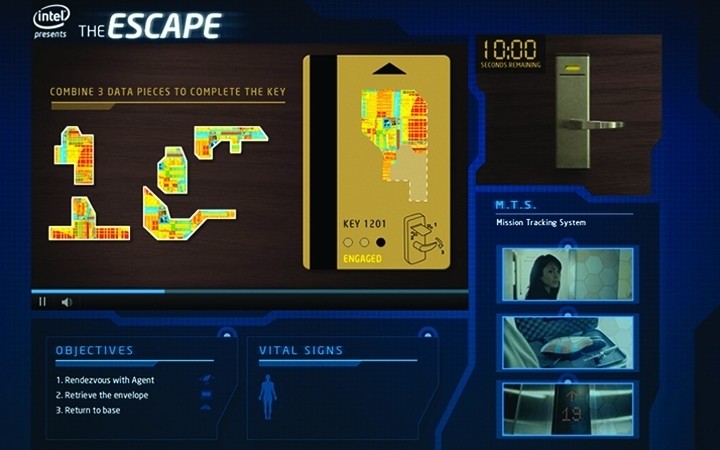
There is one major difference between traditional marketing campaigns, both online and offline, and those run through social networks. While traditional campaigns follow familiar arcs of consumer interest, the day-to-day popularity of content passed from person to person is almost impossible to predict.
“When you do a print campaign, you run it for six weeks, then you stop and people forget about it,” observes Jayant Murty, Asia-Pacific brand strategy and integrated marketing director for tech giant Intel.
“Something in an online video environment lives a lot longer. It has a very interesting life. You’ll see a peak, you’ll see a decline, then you’ll hit another peak, hit another decline; a lot of ups and downs which any marketer needs to be ready for.”
Murty is speaking from experience. Globally Intel has been seeding a series of branded content pieces online, recently launching a mini-thriller called The Escape on YouTube.
Developed by Intel’s Asian operations, the video incorporates interactive elements to appeal to the under 35s, a group Intel has been targeting more and more of late, as what they buy tends to influence older consumers as well.
Younger consumers are also more likely to try out new technology and are less likely to buy something for show, Murty explains, making them receptive to the film’s central message of how a new processor from Intel can boost computer performance.
The film also allows viewers to weave their Facebook friends into the plot, a mechanism to stimulate broader interest in Intel’s content and help spread it virally through the social network.
The potential is almost as big as the net itself. Museum of Me, another Intel Asia creation, has been a huge success.
Online social networks such as Facebook and YouTube are becoming increasingly attractive to brands as distribution platforms, offering a potentially cheap way to magnify the reach and effectiveness of ad campaigns.
These are more likely to be viewed favorably if passed on by friends or trusted peers, though traditional promotion through paid media can help give them a jump-start. Intel provided The Escape with a paid media fillip in two Asia-Pacific markets: Australia, where consumer involvement with interactive entertainment tends to be relatively high; and India, where an Intel-sponsored Bollywood section is seen as a good complement to The Escape. Local marketers outside Asia can promote the film via traditional channels, if they choose.
Despite being developed in Asia, The Escape has been created to tap into universal emotions, thanks to the pervasiveness and unpredictability of social media. “The moment you put anything on YouTube or Facebook, it becomes a global campaign,” Murty says. “The difference is how fast it travels between consumers through networks.”

As a leading independent consulting and research provider focused on Asia media & telecoms, MPA offers a range of customized services to help drive business development, strategy & planning, M&A, new products & services and research. Based in Hong Kong, Singapore and India, MPA teams offer in-depth research reports across key industry sectors, customized consulting services, industry events to spread knowledge and unlock partnerships, and publications that provide insights into media & telecoms.
All Media Partners Asia articles >Thank you for submission
Once you activate the account, your subscription entitles to receive 3 months of complimentary access to ‘The Digest’, MPA’s monthly email analysis,updates across TMT with exclusive industry interviews and data.